Days 47, 48, and 49: Coating. Tunneling. Snapping.
We continued in this last week of our second quarter with the process of lamination. Any dough which is rolled thin, spread with fat, folded, and rolled thin again (this process being repeated any number of times) is called a “laminated” dough. A very common one was the puff pastry we had made the week before; a very uncommon one (that I know only through my research on Middle Eastern breads for our second final project) is malooga, a Yemeni flatbread which is prepared in the same way. The one most recognized around the world though, is probably the croissant, which we finally got to this week. Surely right on the croissant’s heels is the Danish, which we also made.
The origin of the croissant goes (something) like this: in Vienna (yes, which is not in France), bakers were working in the very early morning, when they heard alarming noises coming from what seemed to be underneath the city. They alerted the authorities, and lo and behold, the Ottomans were tunneling their way under the city to sack it. The military responded and before you knew it, the invaders were squashed in one fell stroke. The bakers were credited with saving the city, and, in recognition of their heroism, they were graciously permitted to create a new pastry. (Rodney Dangerfield should have been telling this story.) They thus created the croissant, its crescent shape a sort of middle finger to the Ottoman Empire (who symbolized itself with the crescent, as the Turkish flag still does). But I digress.
The major difference between puff pastry and both croissant and Danish doughs is that the latter two contain yeast. Obviously this creates rise, but that fact is fairly significant when you compare it with puff pastry. There, the only way to obtain a perfect rise is through a thorough and perfect rolling and folding technique, allowing the moisture in the butter to push the many layers of dough up and apart with stunning ease and surprising efficacy. With these new two doughs, however, the fact that the yeast aids the rise allows us to create it with fewer turns of dough, and, at the same time, promotes a degree of evenness in the rise of the final product.
We began with Danish. This smooth and cooperative dough (ok, sorry to interrupt, but I have a rather large digression on which to embark: My core philosophy with food is, and long has been, that it should be comprised of natural, whole, real ingredients – ingredients which we can identify. As my food education continues, both leisurely and formally, I have begun to learn that certain things like xanthan-, carageenan-, and guar gums are natural plant derivatives, so my derision of them has concluded. However, thanks to food shortages and industrialization efforts during and after WWII, there are other widespread and odious ingredients in food today, and they’re dually demonic. The only thing they contribute to food, by and large, is stability; not flavor, not texture, not quality, simply shelf-life. Meanwhile, as is coming to light even now, hydrogenated fats are… well, they’re just not good for you. Same goes for high-fructose corn syrups, polysorbates, mono- and di-glycerides, modified food starch… what are all these things? Not to sound prideful but I’ve read a fair amount about food science and I know where they come from and how they’re made, but I still don’t quite know what they are. When something is derived from “pineapple,” I get it. I can imagine it. When something is derived from “polyoxylated sorbitol and oleic acid,” you really start to lose me; I’ve never seen that on any tree and I’ve been in a few forests now. If all this sounds like hippie, tree-hugging nonsense, examine this trend: heart disease, cancer, diabetes, and food allergies are at an all-time high for us as a species, and these conditions are especially prevalent in regions whose food supply is tainted with these things. Won’t you please join me in crusading, at least in your own daily eating and cooking, for pure, clean, true food? It’s not your fault or mine that these things have become staples in the American diet, but we can do something about it. That being said, I should mention that Danish dough) is one of the few products that benefits from the use of margarine. It gives the dough an even softer texture, and the butter flavor of the margarine doesn’t come across as chemical or overpowering in the final product. We did, however, use butter in ours, kneading an amount of flour into it, and the final product was truly excellent. We formed ours into a number of fruit envelopes (the shape most closely resembling what most of us think of as “Danish”), and into one long prune-filled braid.
Proceeding, we made croissants. (Here’s an oddity for you: all my snobbery and French lessons aside, I hope you find it enlivening that I say cruh-‘sahnts, not ‘cghrwa-soh. It’s okay, we live in America.) For as many times as I’ve failed in making these at home, it went fairly well. We didn’t have enough time to allow them to rise properly, so they didn’t expand to the light and airy state that anyone enjoying a croissant would generally prefer. However, for some reason not too many of us complained about a product that was a little heavier and in which the butter was more concentrated. In general, not a huge event. Next time, though, watch out.
We followed these slightly off but clearly understood pastries with a different sort of croissant. Pains au chocolat, or “chocolate croissants” as they’re callously called here, share the top of my Great Pyramid of Favorites with crème brûlée and donuts. Since I left France, I’ve been trying to find a good one; this above all other food matters so far has been my grail quest. The defining factor of a good one, for my money, is a certain amount of “snap” to the chocolate; it shouldn’t be soft. This way, rather than eating a goo-filled croissant, you’re eating a real croissant at the same time as real chocolate, and what could possibly be better than that? Finding a proper one of these is a true quandary. Certainly don’t get one from a coffee-shop chain; their chocolate is downright mushy. Corporations aren’t the only ones who missed the boat; it’s hard to find a good one even from a great bakery. When we made them in class, I was a little ho-hum, my longtime discouragement about this nitpicky little detail a foregone conclusion at this point. We were each given a number of small, narrow bars of compound chocolate (that is, chocolate which has had a small amount of vegetable oil mixed in, so it doesn’t break down in the heat of the oven – it’s all-natural, mind you!). We enrobed these bars in small rectangles of croissant dough, sealing them on the bottom. Shortly after pulling them from the oven, the fact that they were really too hot to eat was trumped by the incredible aroma filling the room, and we all set upon them like a pack of hyenas at the end of a thin year. The chocolate, of course, was gooey, but the pain au chocolat was heavenly anyway. The next morning, I packed two of these delightful creations for breakfast. When I bit into the first I was slightly more exuberant at my desk than I may have been in quite some time… for the first time in nine years, my teeth stopped at the chocolate and I had to bite just a tiny bit harder to break through it before it surrendered itself to my startled, happy mouth. Not a minor difference. When that snap is there, the chocolate melts at the same moment that the flavor of the butter comes to full light, and both of them float away together on a raft of gossamer pastry.
Sailing into the ecstatic glory of a perfect sunset.
Sunday, March 25, 2007
Subscribe to:
Post Comments (Atom)





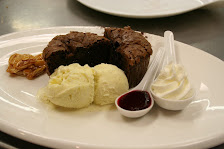
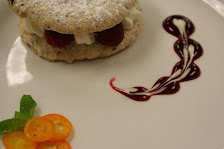
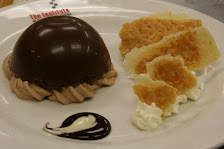
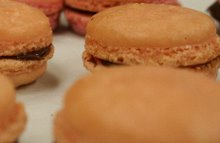
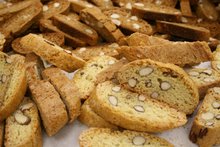




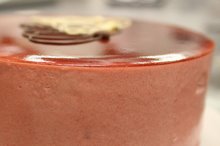



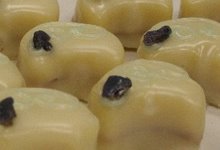
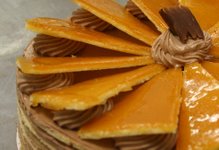



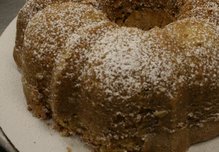
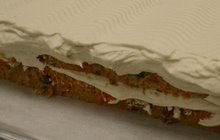


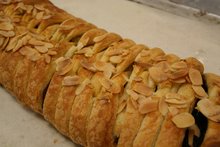






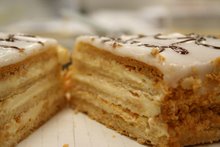
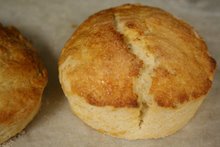


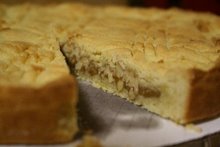












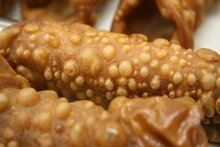


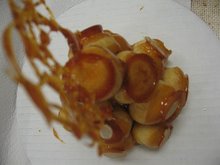
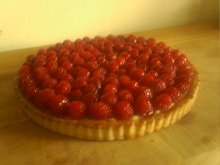


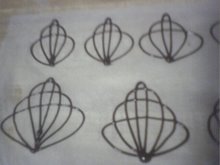


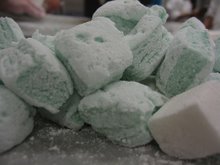

No comments:
Post a Comment